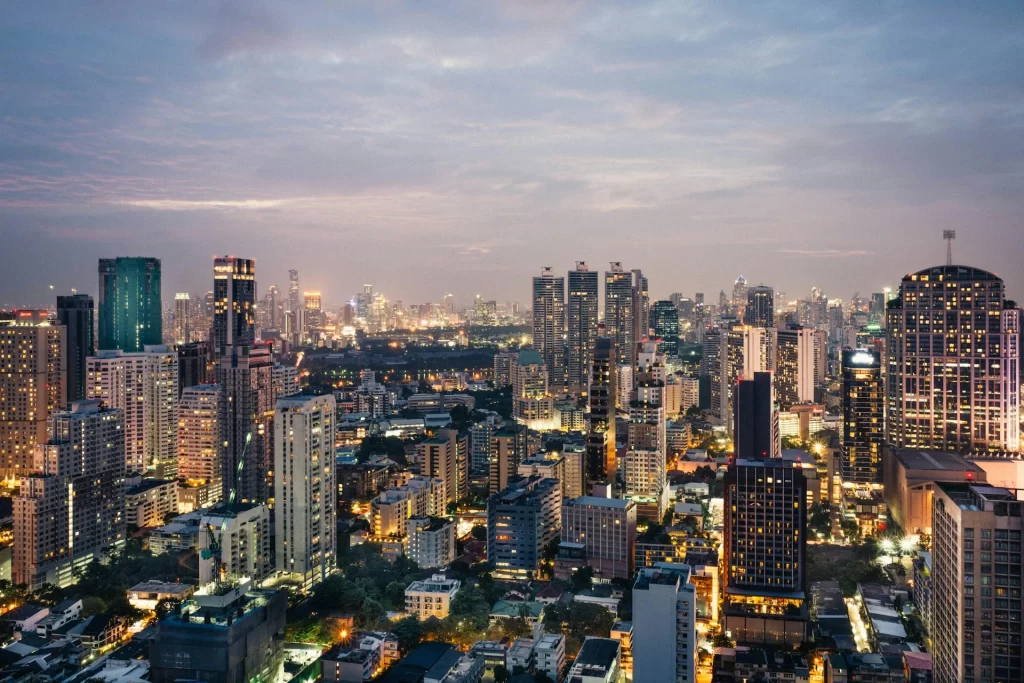
Choosing a city to stay in is not an afterthought, whether you are just traveling or seriously looking to move to a new city.
After all, you do not want to spend your previous vacation days on the wrong city, or far worse, move to the wrong city. You would suffer a waste of time, money, energy and emotions.
When it comes to bustling Bangkok, Sukhumvit is a major road and commercial area in Bangkok that spans several neighborhoods. It is an extremely popular area with great diversity of amenities, people, lifestyle, and transportation options. In short, it is an exciting area with no lack of action and opportunities.
This calls our attention, especially since Bangkok is an everpopular travel spot and a city many would consider moving to for work and living.
No doubt, Sukhumvit deserves a deeper dive. Here are 9 reasons you’d want to stay in Sukhumvit.
1. Sukhumvit is a central, well-connected area.
Whether you are just traveling or checking out a new city to potentially move to, you want to get around easily to explore multiple parts of the city. Perhaps even the entire Bangkok in this case, including the less touristy areas, and possibly the outskirts.
For this simple reason, Sukhumvit is a great choice. It has a ton of transportation options. You can get around via the BTS skytrain, MRT subway, taxis, motorbike taxis, tuk-tuks, and public buses. Generally, the train system is very efficient in Bangkok along with e-hailing (Grab and other apps) and taxis. You often do not need to wait too long for your ride.
If you are staying in the city center, all you need is often the BTS or MRT, besides walking. But with the efficient transport infrastructure, you can easily go to less touristy neighbourhoods and even the outskirts of Bangkok.
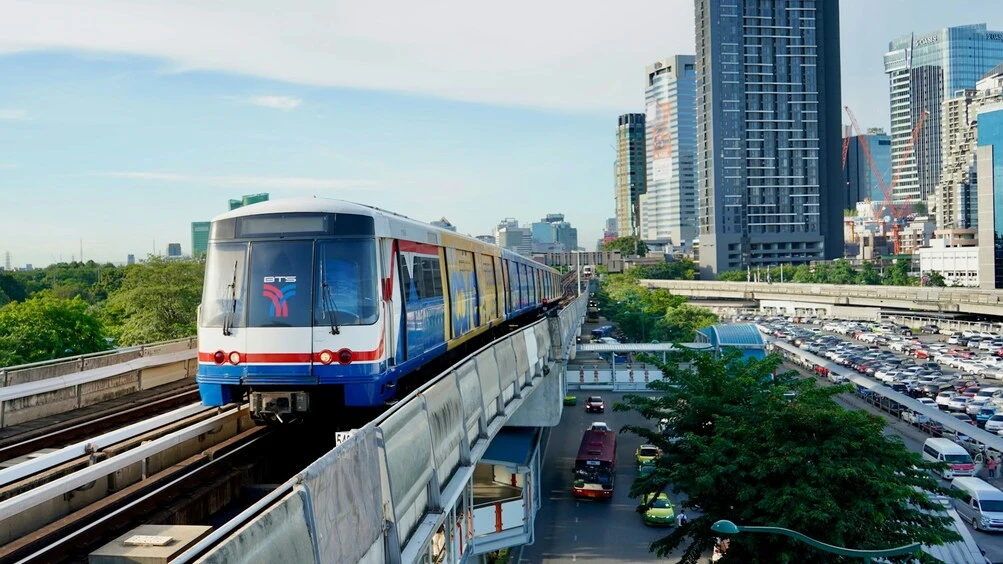
2. Sukhumvit is first-time traveler friendly.
Without doubt, Sukhumvit is tourist-friendly, so you’d be more at ease if you are a first-time traveler or if you are making your first visit to Thailand.
Here are some examples why Sukhumvit is tourist-friendly (though you also get this in several other parts of Bangkok like Siam and Silom):
- Transportation and Accessibility:
- It is a well-developed bustling area with great transportation options.
- You get convenient access to ATMs for cash withdrawals.
- Tourist Support:
- Most staff you’d encounter at train stations and dining places are multilingual; they tend to understand and speak basic English.
- You get tourist information centers.
- Shopping and Entertainment:
- There are endless shopping and entertainment options.
- Food delivery is relatively cheap if you choose to stay in for a day or two.
- Healthcare and Safety:
- You get access to healthcare such as pharmacies should you fall sick.
- It is a safe city.
If you are a nervous first-time traveler, you’ll be less likely to be thrown unwelcome surprises. Just stay away from the red light district areas if you prefer to avoid them. Even in residential neighbourhoods, hospitality tends to be great.
3. It offers diverse neighbourhoods and amenities.
Since Sukhumvit is friendly to first-time travelers, you can already tell it offers a diversity of things to do. What you may not know is that there is a diversity of neighbourhoods within the Sukhumvit area as well.
For simplicity, Sukhumvit is divided into lower, middle, and upper Sukhumvit, and each area has different amenities and a different vibe.
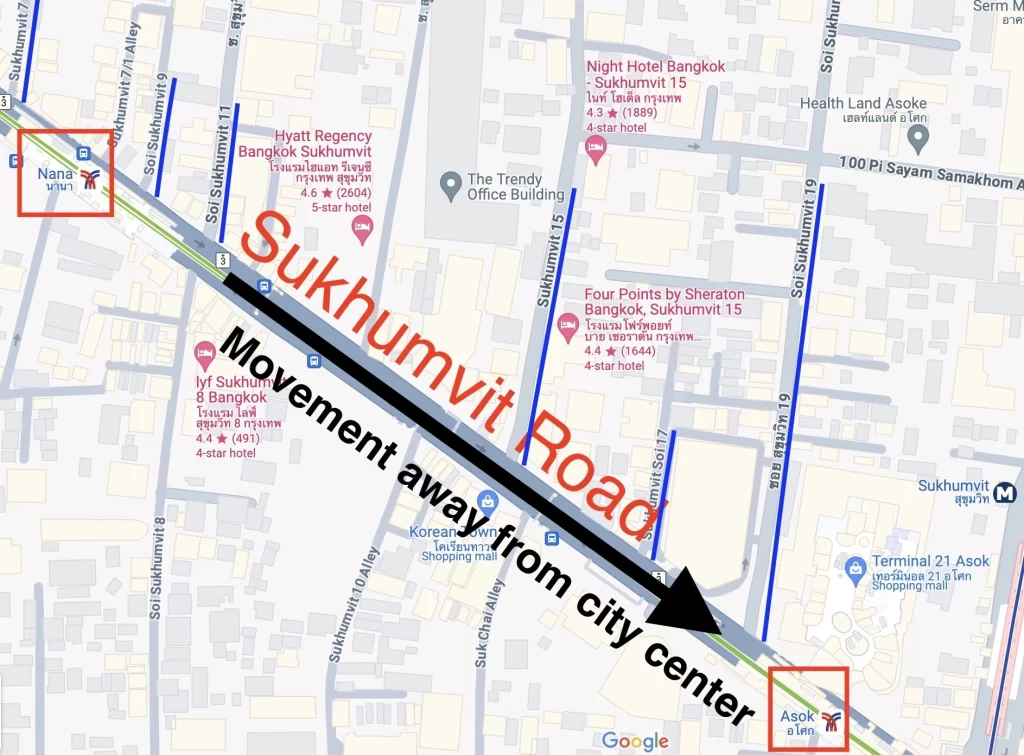
FYI: “Sois” are the smaller streets or lanes branching off Sukhumvit Road. Generally, the numbering of “Sois” corresponds to their distance from the city center. As you move away from the city center, the soi numbers tend to increase – I’ve provided some numbers of the Sois of train stations within lower, mid, and upper Sukhumvit.
Lower Sukhumvit:
- Phloen Chit
- Nana (Soi Sukhumvit 3-9)
- Asok (Soi Sukhumvit 14-23)
Mid Sukhumvit:
- Phrom Phong (Soi Sukhumvit 39)
- Thonglor (Soi Sukhumvit 55)
- Ekkamai (Soi Sukhumvit 63)
Upper Sukhumvit
- Phra Khanong (Soi Sukhumvit 71)
- On Nut
- Bang Chak (Soi Sukhumvit 97)
- Udom Suk (Soi Sukhumvit 103)
- Bang Na
- Bearing
- Samrong
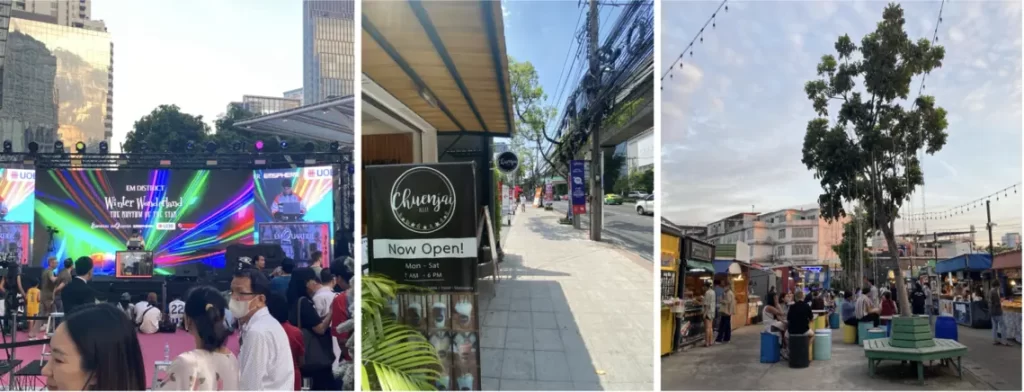
If you visit mid and especially upper Sukhumvit, you can find more residential areas with local markets and old-fashioned shophouses. Examples are places like On Nut, Udom Suk, and Bang Na.
But even if you stay in the bustling tourist hubs of Nana and Asok in lower Sukhumvit, the upper Sukhumvit neighbourhoods can be easily accessible, as they are connected by the BTS Skytrain.
Hence in Sukhumvit, you truly get to experience a variety of lifestyle options and amenities, depending on where you go.
4. You get the local touch despite commercialization.
In most of Bangkok, you can experience the local touch despite commercialization.
In truth, Sukhumvit is rather cosmopolitan for obvious reasons. But on the side streets, there are local street food vendors, massage parlours, and tuk-tuks to add more of a local feel.
Tip: I’d recommend that you go further away from the tourist hubs of Nana and Asok. For example, even if you stay in downtown Bangkok, visit Upper Sukhumvit. Go to Phra Khanong or On Nut. These are neighbourhoods where you get a better glimpse of daily living. You get local markets, malls, shops, eateries, and cafes. These residential areas are way quieter.
Ideas of how to explore:
- If you are afraid of getting lost, follow the BTS/MRT map and go further away from the central tourist hubs of Sukhumvit. If you are adventurous, hop off the train on a random stop on the Sukhumvit Line.
- Do a quick web search on ‘things to do’ in that neighbourhood or area and choose 1-2 things that appeal the most.
Examples of neighbourhoods with a local and residential feel: Thonglor, Ekkamai, Phra Kanong, On Nut, Bang Chak, Udom Suk.
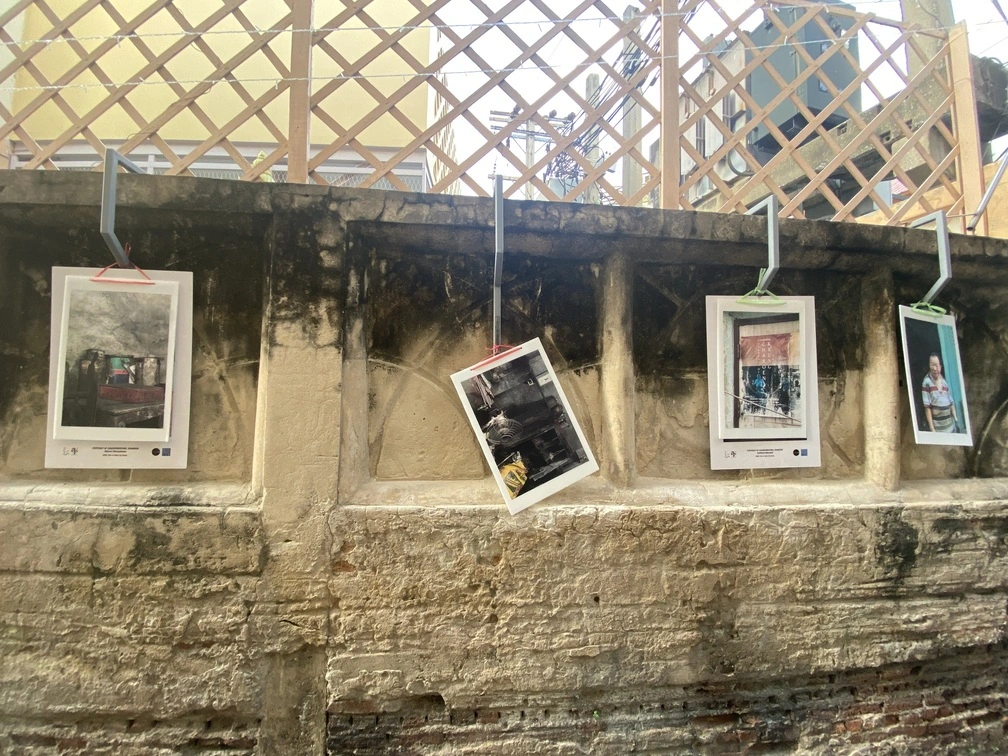
This article was originally published on unboundist.com. If it is now published on any other site, it was done without permission from the copyright owner.
5. Sukhumvit gives you access to cheaper neighbourhoods.
Following the crowds, you might often find yourself within popular tourist hubs, which are commercialized areas with higher prices.
These touristy areas may not be where you want to be 24/7.
If you don’t have a strong preference for tourist hotspots, I recommend staying in or near cheaper residential neighborhoods. This is especially important if you aren’t just traveling, but are exploring Bangkok’s Sukhumvit as a potential place to live.
Which neighbourhoods are more affordable in Bangkok? Similar to the above point on being in less touristy areas, visit mid/upper Sukhumvit neighbourhoods via the BTS Skytrain and check out the local markets, food courts, and malls in areas/streets that appear more residential than touristy.
Neighbourhoods in Sukhumvit offering a lower cost of living: Phra Khanong, On Nut, Bang Chak, Punnawithi, Udom Suk, Bang Na.

6. Sukhumvit suits all budgets.
You can live pretty cheaply in Sukhumvit or live expensively. It is up to you. You have utmost flexibility in spending.
The factors involved are typically accommodation and various forms of shopping, dining and entertainment.
Accommodation:
- In general, housing is pricier in Bangkok than other parts of Thailand and most other neighbouring Southeast Asian cities.
- Central Sukhumvit: It’s difficult to find a hotel/Airbnb for USD $20 or less per night, or a decent studio apartment for less than USD $250 per month.
- Peripheral Sukhumvit: The further away from Nana/Asok tourist hubs, the better the prices for housing.
However, beyond housing, you can spend very little on other aspects of your personal lifestyle if you wish.
Lifestyle and entertainment:
- Affordable Options: You can save money on essentials like transportation and food. There are plenty of low-budget options available, wherever you are in Sukhumvit.
- Mid-Range Choices: There are plenty of options available for moderate spending on dining, shopping, and personal care without breaking the bank.
- Luxury Experiences: If you prefer upscale living, Sukhumvit boasts high-end restaurants, luxury malls, and exclusive entertainment venues.
In Sukhumvit, you have the freedom to choose how much you spend on various aspects of your lifestyle, ensuring you can enjoy your time in Bangkok regardless of your budget.
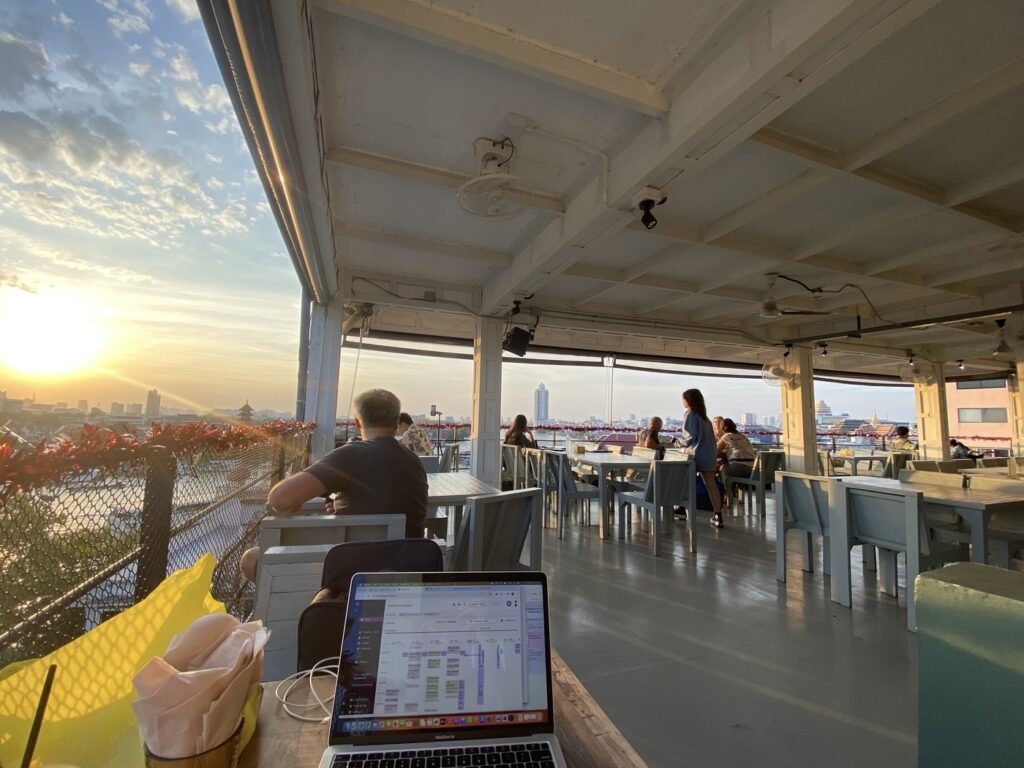
7. It is a great place to meet people.
Whether you are traveling or exploring moving to a new city, it’s a fantastic idea to talk to the locals.
Talk to service staff, shop owners, local residents, business professionals, and other expats. Get to know the locals and the city better.
Sukhumvit is a relatively easy place to meet people.
The only ‘downside’ I can think of is that you might need Google Translate and have it ready on your phone, especially if you are meeting a Thai local in person. Learn how to interact with people whose English isn’t their first language.
It’s a skill I think you should acquire if you are international and travel frequently, especially if you like exploring Southeast Asia since people do not speak English in many areas.
8. It is relatively safe.
Safety generally isn’t a concern in Sukhumvit. It is a lower crime area in Bangkok, given the central and well-traveled characteristics of the area.
Sukhumvit, being a bustling commercial and residential area, benefits from good security presence. It has a large expat population. Tourists frequent Sukhumvit. It is a major urban area that has low crime.
9. You have easier access to Bangkok’s outskirts.
Given the efficient connectivity within Bangkok, you can easily access various parts of Bangkok via the BTS Skytrain, even the suburbs and outskirts.
These areas are outside the busy urban core of Bangkok and offer a different pace of life. You may be genuinely interested in these alternatives if you want to stay at or near Bangkok but outside the bustling city core.
You can even take a Grab ride from Sukhumvit to a residential suburb within 30-40 minutes. I have done this when I visited a chill restaurant, River Bar Club Retro, in the Bang Phlat district.
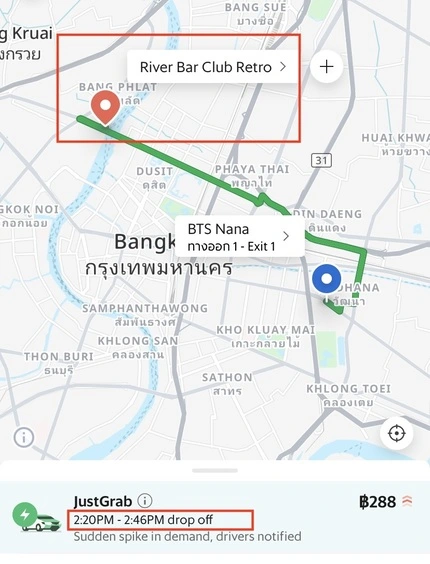
Something that adds to the appeal of Bangkok, which many other travelers and even locals have discovered, is that there are always ‘hidden’ spots and gems yet to be discovered in Bangkok.
Bangkok is huge, well-connected, and diverse – with many districts, neighbourhoods, and suburbs. It is well worth a visit and you wouldn’t finish exploring the city in a week even if you tried your hardest.
Of course, there are negatives you should consider before visiting Sukhumvit and Bangkok in general, such as the hot and humid weather and noisy traffic. But the good far outweighs the negatives overall.
Still, keep in mind that there are different strokes for different folks, as everyone has their own unique preferences and tastes. Happy traveling in Bangkok!